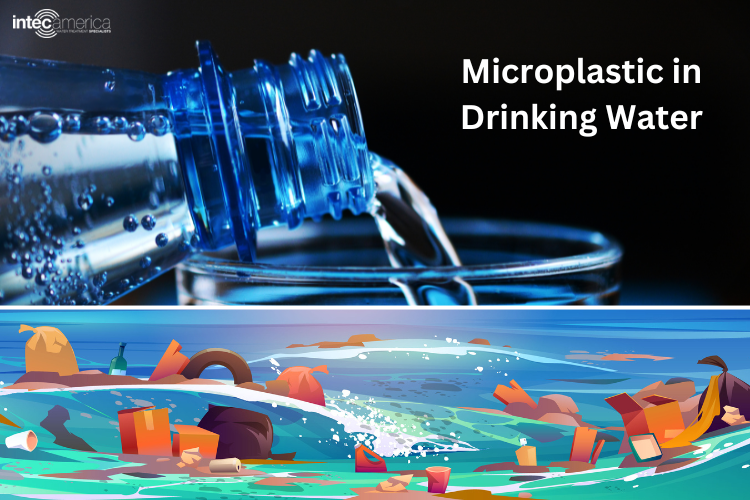Microplastics in Drinking Water: Understanding Causes and Prevention
Plastic is one of the most popular commercial materials used today. They are used in a wide range of applications, starting from manufacturing to packaging water. We all know how harmful plastics are to our ecosystem, but what about microplastics? Microplastic is the tiniest form of plastic (smaller than 5 millimeters) which cannot be seen easily. However, microplastics are present in our daily-used products like facial scrubs, shampoos, toothpaste, tea bags, water bottles, and so on. But do you know plastics generally enter in our bodies through drinking water? Yes, that’s true. Once consumed, microplastics remain in the body for a long time and impact our bodily functions in many ways. This post discusses microplastics in water, their sources, and possible ways to prevent them from entering our bodies.

How do Microplastics Enter the Water?
Microplastics are present everywhere, and therefore, it has infinite ways to enter the water. The following are the most common ways through which microplastic gets into the water:
- Degraded plastic waste
- Wastewater effluents
- Sewer overflows
- Environmental deposition
- Surface run-off
- Using plastic for storing water
How to Detect the Presence of Microplastics in Water?
Microplastics are tiny particles that cannot be seen by the naked eye. Therefore, there are no possible ways of testing the presence of microplastics in water at home. However, the water sample can be sent to laboratories to check the presence of microplastics. In laboratories, there are different instruments, like a microscope, x-ray photoelectron spectroscopy, etc., which help detect microplastics in water.
Impact of Microplastics on Human Health
Microplastics are not biodegradable, and therefore their accumulation in bodies will be harmful. Also, they are disastrous for the environment as well as living beings. Consumption of plastics can lead to the following life-threatening diseases:
- Impact on the reproductive system
- Cancer
- Inflammation
- Obesity
- Weak immune system
- Cardiovascular diseases
- Chronic diseases
- Skin and hair problems
Methods for Removing Microplastics from Water
Microplastics are very minute particles that range between 100 nanometers and 5 millimeters. To remove these particles, you need a filtration system that has a precise micron rating. There are different methods, like distillation, ultrafiltration, reverse osmosis, etc., used for filtering water and making it eligible for drinking. Among these methods, reverse osmosis, or RO, is the most effective technique for removing microplastics from drinking water. Let’s look at how RO works.
Working of Reverse Osmosis Filtration Systems
A standard RO system effectively removes microplastics in water, thus filtering it completely. The system works on three effective stages to completely filter the water and make it safe for drinking. These stages are as follows:
- Sediment Filter: First, the water passes through the sediment filter, which removes larger contaminants like sand, dust, and other particles from the water.
- Activated Carbon Filter: This phase of reverse osmosis removes other unpleasant contents from the water. This includes the unpleasant smell of chlorine, taste, and so on.
- Reverse Osmosis Membrane: In any standard RO, this is the last stage of filtration that completely removes the tiniest particles like microplastics from water.
In addition to the above stages, there are some advanced reverse osmosis systems that contain two extra stages. One is to ensure the clarity of the water, and the last one is used to add on the minerals in the water that may have been lost during the filtration process.
If you are looking for an effective filtration system to get microplastic-free water, then you must opt for a reverse osmosis filter. Reverse osmosis is an advanced and very helpful technique that gives you absolutely clean and filtered drinking water. However, while purchasing reverse osmosis filters for your residential or industrial needs, make sure you source them from a trusted manufacturer like Intec-America. The company provides whole house Point of Entry(PoE) Reverse Osmosis and point of use (PoU) systems from leading brands like Nelsen, Watts, and more. Get in touch with the experts at the company to discuss your requirements.


